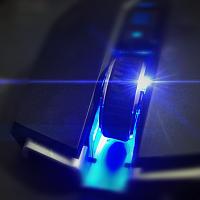Can someone Explain Tessellation?
Tessellation for DX puts two concepts together. Actual tessellation and displacement maps....in this post I will use the term points instead of the correct term vertices, this is mainly because I have found people can visual the word point instead of vertices better.
Actual tessellation for models doesn't do much. It just adds extra points on the model (Tessellation doesn't move around those points...so tessellation in itself doesn't have much use, unless you manipulate the points after).
Displacement maps are basically a form of a texture. Instead of being a type of texture you can see though, the "texture" contains height information. The problem with displacement maps though is they can only manipulate the object if there are enough points...e.g. If you have just a square...if you make up that square using 4 points (the corners) and put on a displacement map you would get a square. If you built a square with 5 points (4 corners and one in the center) and your displacement map had a high point in the center then you would create a pyramid.
Both technologies have been around of a while. Displacement maps had the downside that you needed a very high polygon count surface to begin with (which just balloons the size of models)...and even if you do create a high poly surface, it would just be better to make the model high detailed.
Tessellation had the problem of creating a high resolution polygon in memory, but there wouldn't be any manipulation of it.
Tessellation for DX combines both together...tessellation creates a higher polygon object (as much as your video card can handle) and the displacement would manipulate the newly added points to add better detail to an object.
So in principle to add it to a game, the developers just need to create a displacement map and tell DX that the object is meant for tessellation....anyways hope this helps, I took a few liberties with it actually works but the general concept is there.


.png.255947720031a641abdac78e663b681c.png)

















Create an account or sign in to comment
You need to be a member in order to leave a comment
Create an account
Sign up for a new account in our community. It's easy!
Register a new accountSign in
Already have an account? Sign in here.
Sign In Now